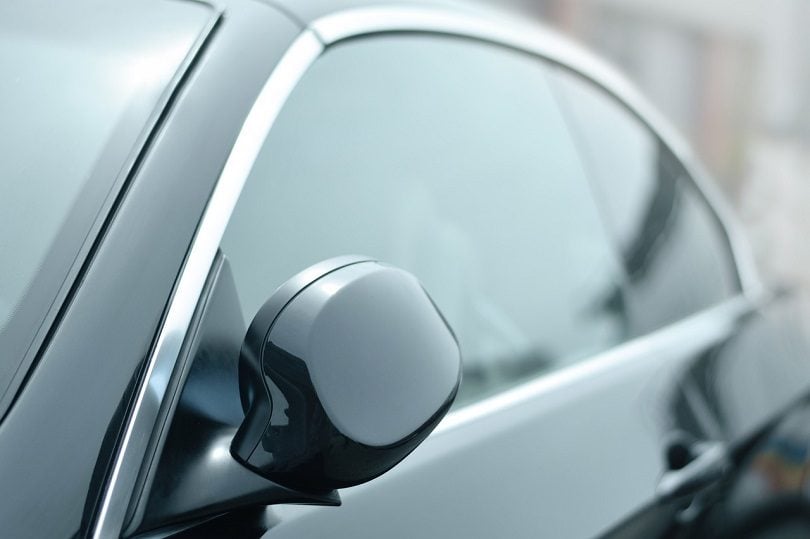What Are the Pros & Cons of Tinting Car Windows?
-
- Last updated:

Apart from looking good and giving your precious ride a unique personality, the main function of tinting your windows is to serve as protection from the hot summer sun, saving you from distracting reflections and increased eye strain. But as with all good things, there are negative aspects of tints too.
Before deciding to tint your windows, there are a few important things to consider, including tint percentage.
Tint Percentages

Tint percentages are fairly simple to understand: The lower the percentage, the darker the tint will appear. Tinting films are measured in VLTs, or visible light transmission levels. These levels are represented as the percentage of visible light allowed through the window. For example, tinting with a 40% tint means that 40% of visible light will be able to pass through the window.
Most modern cars now come equipped with a small amount of tint already on the windows. However, many car enthusiasts want to put a unique stamp on their vehicle, so aftermarket tinting is a popular practice, typically on the side and rear windows. A tint devotee may also add tint to the top 10% of their windscreen.
Bear in mind that depending on what state you live in, there are fairly strict regulations on tinting, especially on your windscreen. It’s worth checking how dark you can legally go, before diving headfirst into the tinting world.
The Pros of Tinting Your Windows
Tinted windows not only make your car look cool, but they will also help keep your car cool. They are most beneficial in hotter climates or in the summer months. On hot days, a tint can block uninvited UV rays from beating down into your vehicle and onto passengers’ skin or worse, your leather seats! It keeps the sun from damaging interior components of your car like the dash and upholstery, which are fairly susceptible to UV rays. Without tints, your upholstery will fade away in no time.
Not only do tints offer a significant reduction from glare on windows and metal surfaces during the day, but they also help at night against the reflections of headlights from other cars.
Another great benefit is privacy. Tints make it harder to see into your vehicle and so prevent the potential theft of anything you leave in your car. They also offer a bit more strengthening protection than standard glass. The thin plastic film acts as a shatterproof shield to further discourage would-be thieves. Side windows are made from tempered glass, which if broken, will shatter into a million dangerous pieces. With tint film, your window is far less likely to shatter, as the sticky film keeps the glass in place.
In winter, tints have the benefit of keeping heat already inside your car from getting out.
Tinting Cons
Most problems with tints are only caused when they are too dark. An obvious point is impaired vision, both to you and to other drivers. If it’s a cloudy or rainy day, the tint makes it difficult to see properly around your vehicle. Tints work in a similar way to sunglasses, except you can’t just take them off, and a low light environment can swiftly become a dangerous situation. This danger is further exacerbated at night, in that a very dark tint can cause a dangerous reduction in visibility.
A dark tint can easily cause misunderstandings with others. If you are at an intersection, its often important to be able to have eye contact with other drivers and pedestrians, who can communicate their movements to you.
Tints that are too dark may also increase your insurance rates. This is because providers see it as potential risk in your driving, even when it’s at a legal level.
Being a thin plastic layer, tinting can easily be damaged. Any kind of sharp object moving across it will cause an ugly rip, and you’ll have to replace the entire sheet. This can be both time consuming and expensive, as well as a challenge to try and match it to the exact shade of the rest of your windows.
In summary, here are the pros and cons of tinting your windows:
- Keep your car cool
- Block UV rays
- Glare reduction
- Privacy
- Impaired vision
- Potential increased insurance premiums
- Easily damaged
Light Is Right
In summary, tinting on the lighter side of the spectrum will add benefits, while mitigating many cons. The right level of tint will block UV rays without a significant reduction in visibility and will make your back-seat passengers a bit safer from the sun and the possibility of shattering glass. There is no good reason not to tint your windows, provided that it’s not too dark and is done properly by a licensed professional.
- You might also be interested in: Ceramic Window Tint vs Regular: Pros, Cons, and Differences
Featured Photo credit: Tinted car by CreaPark, Pixabay
Contents

